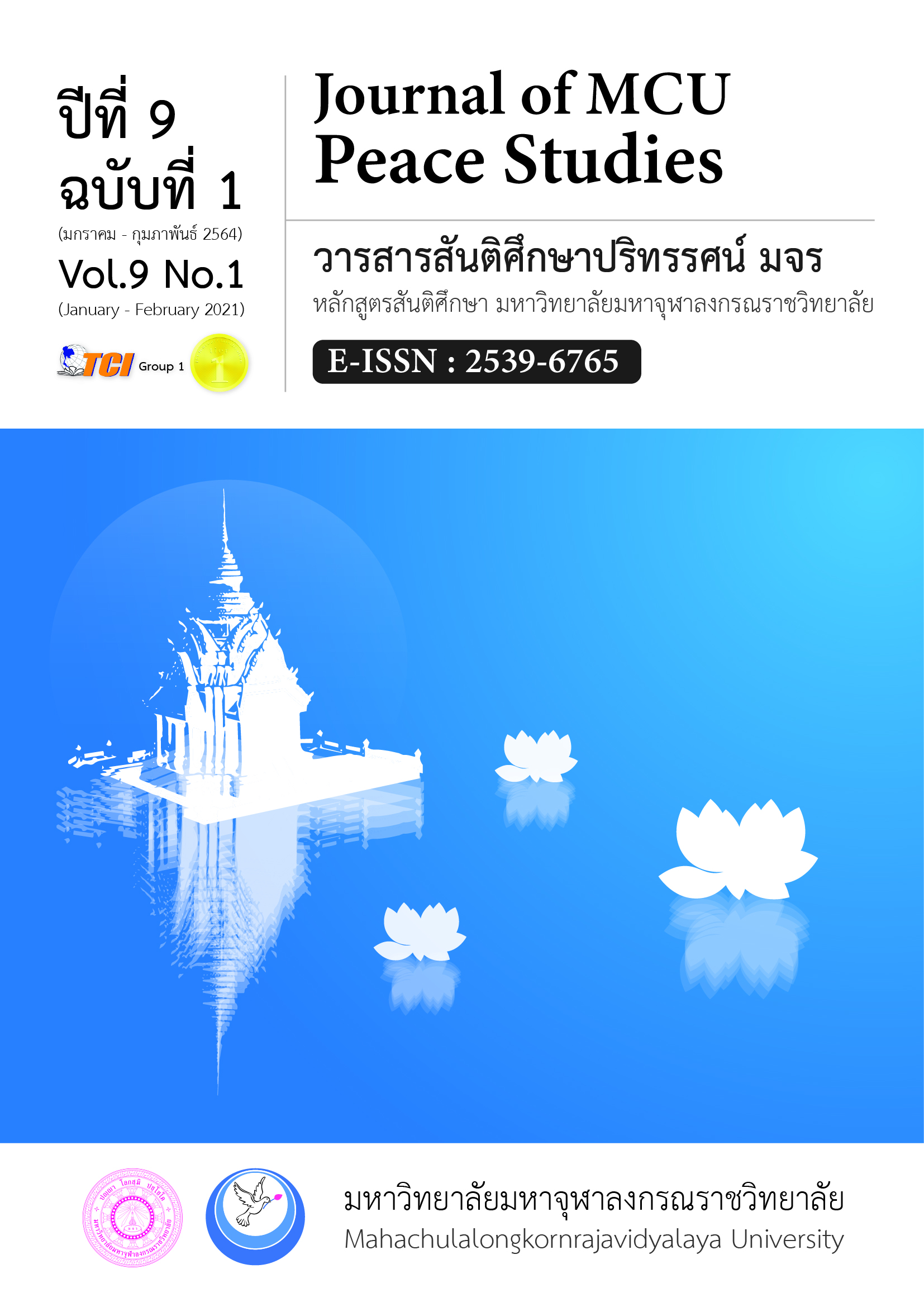การพัฒนารูปแบบการเรียนการสอนในสภาพแวดล้อมเสมือนจริงตามแนวคิดคอนสตรัคติวิซึที่มีผลต่อความสามารถในการคิดวิเคราะห์ ของนักศึกษาพยาบาล วิทยาลัยพยาบาลบรมราชชนนี
Main Article Content
บทคัดย่อ
การวิจัยครั้งนี้มีวัตถุประสงค์เพื่อ 1) เพื่อศึกษารูปแบบการเรียนการสอนในสภาพแวดล้อมเสมือนจริง2) เพื่อพัฒนารูปแบบการเรียนการสอนในสภาพแวดล้อมเสมือนจริง 3) เพื่อศึกษาผลของการใช้รูปแบบการเรียนการสอนในสภาพแวดล้อมเสมือนจริงตามแนวคิดคอนสตรัคติวิซึมที่มีผลต่อความสามารถในการคิดวิเคราะห์ของนักศึกษาพยาบาล การวิจัยครั้งนี้เป็นการวิจัยเชิงพัฒนา โดยใช้ระเบียบวิธีการวิจัยเชิงปริมาณและเชิงคุณภาพ ประชากร ที่ใช้ในการศึกษาครั้งนี้นักศึกษาพยาบาลศาสตร์ ชั้นปีที่1 ปีการศึกษา 2562 วิทยาลัยพยาบาลบรมราชชนนี เครือข่ายภาคกลาง 2 สังกัดสถาบันพระบรมราชชนก กลุ่มตัวอย่างที่ใช้ในการศึกษาเป็นนักศึกษาพยาบาล ที่อยู่ในวิทยาลัยพยาบาลแห่งหนึ่ง จำนวน 120 คน เครื่องมือที่ใช้ในการวิจัยได้แก่ รูปแบบการเรียนการสอน CARE แบบประเมินความรู้และการคิดวิเคราะห์ ใช้สถิติวิเคราะห์เชิงพรรณนา, T-test ที่ระดับความเชื่อมั่น 95% และการวิเคราะห์ข้อมูลเนื้อหา
ผลการวิจัยพบว่า 1) รูปแบบการจัดการเรียนการสอน CARE (CARE Model) มีองค์ประกอบหลักคือ 1.ความพร้อมเพื่อเอื้อต่อการเรียนรู้ 2.การนำแนวคิดมาประยุกต์ใช้ 3.การสะท้อนองค์ความรู้ที่ได้รับ 4.ผลลัพธ์ที่ได้ 2) เป็นรูปแบบที่ผ่านการประเมินและรับรองความเหมาะสมจากผู้เชี่ยวชาญ (N=13) อยู่ในระดับมากที่สุด (x̄ = 4.62) โดยประสิทธิภาพอยู่ระดับ 85.33/88.88 3) ผลการประเมินการใช้รูปแบบพบว่ารูปแบบดังกล่าว สามารถเพิ่มความสามารถในการคิดวิเคราะห์หลังเรียนมากกว่าก่อนเรียนอย่างมีนัยสำคัญทางสถิติที่ระดับ .05 ดังนั้นรูปแบบ CARE ที่พัฒนาตามแนวคิดคอนสตรัคติวิซึมสามารถนำมาใช้พัฒนาความสามารถในการคิดวิเคราะห์ของนักศึกษาพยาบาลได้
Article Details
ทัศนะและความคิดเห็นที่ปรากฏในบทความในวารสาร ถือเป็นความรับผิดชอบของผู้เขียนบทความนั้น และไม่ถือเป็นทัศนะและความรับผิดชอบของกองบรรณาธิการ ยินยอมว่าบทความเป็นลิขสิทธิ์ของวารสาร
เอกสารอ้างอิง
Anderson, L., & Krathwohl, D. A. (2001). Taxonomy for Learning, Teaching and Assessing: A Revision of Bloom's Taxonomy of Educational Objectives. New York: Longman.
Bloom, B. S. (1956). Taxonomu of Education Objective, Handbook I. The cognitive domain. New York: David McKay Co Inc.
Boonchom, S. (2002). Preliminary Research. (7th ed.). Bangkok: Suwiviriyasarn.
Boromarajonani College of Nursing, Suphanburi. (2018). Bachelor of Nursing Science Curriculum 2561 (Update No.1). Affiliation of Mahidol university. Praboromarachanok institute workforce development.
Brahmawong, C. (2013). Developmental Testing of Media and Instructional package. Silpakorn Educational Research Journal, 5(1), 5-20.
Charoenwong, Z., Keskomon, T., & Tamsat, A. (2018). Virtual Classroom in Teaching and Learning for Nursing Students in Digital Age. Journal of The Royal Thai Army Nurses, 19(2), 120-128.
Chidnayee, S. (2017). The Effect of Constructivist Teaching Approach and Team based Learning on Abilities in applying nursing process of nursing students. Journal of Boromarajonani College of Nursing, Bangkok, 33(1).
Durkheim, E. (1975). Textes (Texts). Paris: Les Editions de Minuit.
Duffy, T.M., Lowyck, J., Jonassen, D.H., & Welsh, T.M. (1992). Designing Environments for Constructive Learning. Environments: Implications for Instructional Design and the Use of Technology. held at the Catholic University Leuven, Belgium.
Duch, B. J. (1995). What is problem-based learning? About Teaching, 47. Newark
Elo, S., & Kynga, S. H. (2008). The Qualitative Content Analysis Process. Journal of Advanced Nursing, 62(1), 107–115.
Leungratanamart, L., & Sukrapa, W. (2016). Development of instructional model emphasizing process skill to enhance analytical thinking for nursing students of Boromarajonani College of Nursing Chon Buri. Journal of health science research, 10(2), 127-140.
Piaget, J. (1972). Intellectual Evolution from Adolescence to Adulthood. in Human Development, 15(3), 1-12.
Pichianwilai, W. (2018). The Effect of Constructivist Instructional Strategies on Critical Thinking Abilities of Nursing Students. Suranaree Journal of Social Science, 12(1), 37-47.
Pimjaisai, J. (2010). The development of instructional model based on constructivist theory to enhance learning abilities of nursing students. (Doctoral Dissertation). Silpakorn University. Nakhon Pathom.
Polit, D. F., & Hungler, B. P. (1999). Nursing research: Principles and methods. (6th ed.). Philadelphia: J.B. Lippincott.
Saettler, P. (1990). The evolution of American educational technology. Englewood, CO: Libraries Unlimited, Inc.
Seewungkum, D., Ketmaneechairat, H., & Caspar, M. (2012). A framework of virtual Classroom model on the Internet. The First International Conference on Future Generation Communication Technologies, 156-61.
Sripa, K. (2015). The Development of An Instructional Model Based on Constructivist Theory to Enhance Thinking Abilities of Police Nursing Students in Mental Health and Psychiatric Nursing Practicum. Journal of The Police Nurses, 7(1), 15-30.
Thongbuaban, R., Kaewurai, W., Wattanathorn, A., & Onthanee, A. (2018). The Development of an Instructional model based on Constructivism theory and Service Learning to encourage competency in community health promotion for public health students. Journal of Education Naresuan University, 18(1), 83-94.
Sangboonraung, W., Simmatun, P., & Samavardhana, K. (2017). Results of Using the LCVLE Learning Model to Enhance Critical Thinking Skills in a Virtual Learning Environment for undergraduate Students. Nakhon Phanom University Journal, 7(1), 25-32.
Wongyai, W., Phatphol, M., & Intalapaporn, Ch. (2015). Developing the Analytical Thinking of Teachers Students by Collaborative Coaching Approach. Journal of Graduate School Sakon Nakhon Rajabhat University, 12(59), 1-2.
World Health organization (2019). Covid-19-WHO Thailand Situation Reports. Retrieved April 30, 2020, from https://www.who.int/thailand/emergencies/novel-coronavirus-2019/situation-reports
Yager, R.E. (1991). The Constructivist learning model: Toward real reform in science education. The Science Teacher, 56(6), 52-57.


